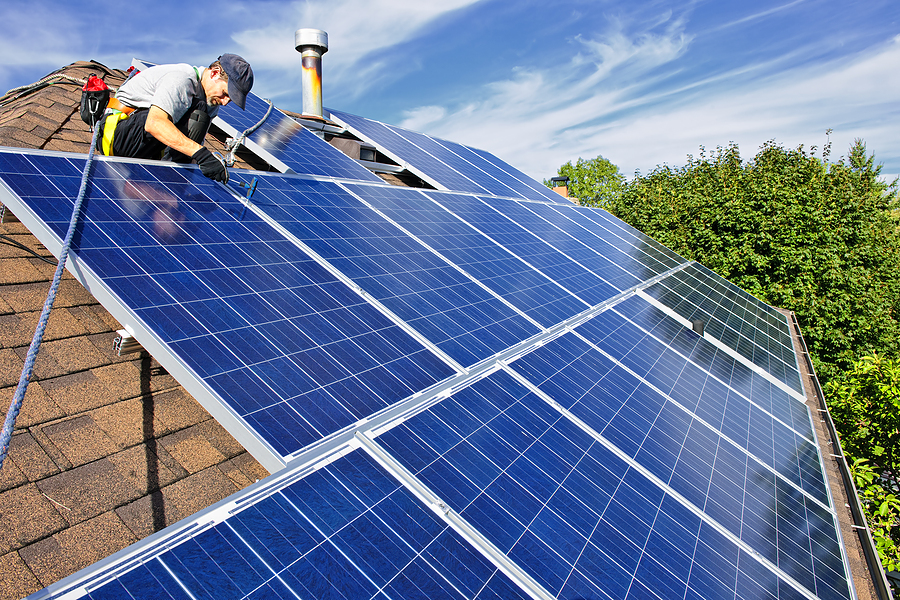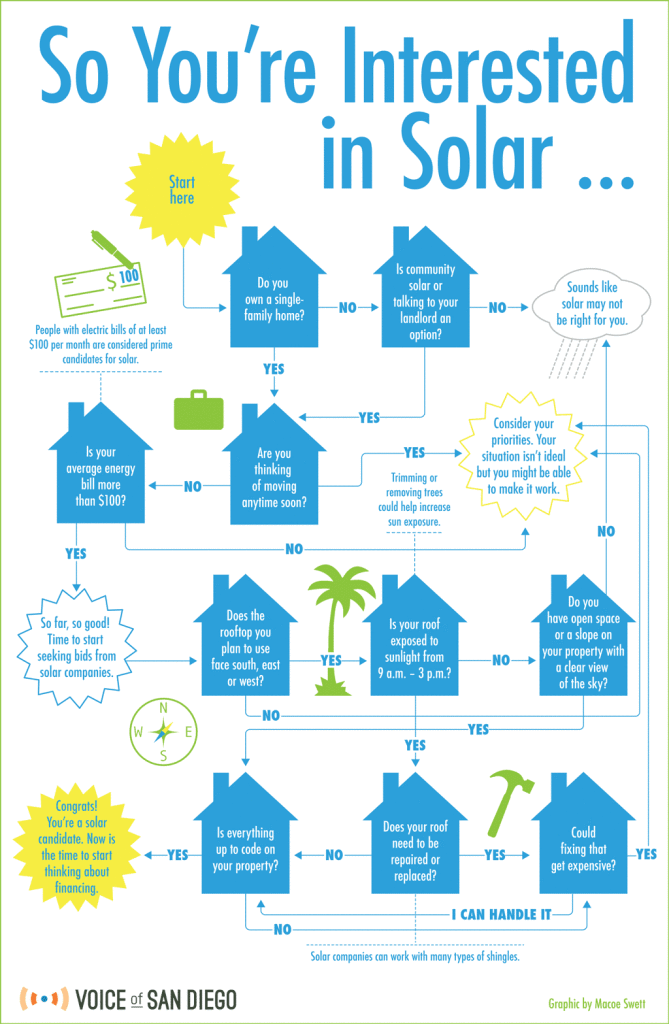Unsure If You Should Go Solar? Read This.
It’s easy to get overwhelmed when you’re considering solar panels. Many folks confess they aren’t sure where to start. The first question to answer is whether you’re a good candidate. So here's a flow chart to help you. Check it out.
Written by Lisa Halverstadt and Tristan Loper
Originally published in the Voice of San Diego

It’s easy to get overwhelmed when you’re considering solar panels. Many folks confess they aren’t sure where to start. The first question to answer is whether you’re a good candidate. We put together a flow chart to help you. Check it out:

Now that you’ve seen the chart, here come the caveats.
Whether the investment pencils out for you depends as much on your priorities as dollars and cents. For some folks, going solar is a good financial investment. Others are most excited about helping the environment with cleaner energy.
Then there’s your specific setup. Take your roof size. One solar company might conclude you don’t have enough space to produce the power you’d hoped for. Others could say what you’ve got is just fine or suggest an awning for your shiny new panels.
Bottom line: This is a general guide that’ll help you assess whether rooftop solar might work for you but you’ll need to consider your own priorities and consult solar companies to get a final answer.
Some Keys to the Solar Equation
Your Energy Bill: Some solar companies aren’t interested unless your average electric bill is at least $100 a month. But others are willing to take on customers with bills as low as $50 to $75 a month. Smaller bills generally mean it’ll take longer to recoup the cost of your solar investment and result in less savings in energy bills. This may not matter as much if greener energy is important to you.
Moving Soon? The specifics of your situation matter, including the way you pay for your panels. If you buy the panels outright, you may be able to tack the cost of the panels onto the sale price of your house and enjoy energy bill savings in the months or years before you move.
But if you opt to lease or take out a loan to get solar panels, you may not see a full return on your investment or end up making payments after you move. Some financing plans have clauses that make it easier to transfer the panels to the new homeowner to make this less of a hassle, though.
Your Roof: Many solar companies are willing to work with various types of shingles and tiles, including Spanish clay. But older roofs may need to be replaced or repaired before you add solar panels. If you need to do that soon, experts recommend contacting solar and roofing companies at the same time so they can coordinate.
What If I’m Not An Ideal Candidate For Rooftop Solar?
That doesn’t mean you won’t be able to tap into solar power. Policymakers are pushing ways to ensure folks who can’t get solar panels can still benefit from that power source.
Let’s start with what’s already in the works in California.
Learn more here about solar in CA here!
Community solar:
State regulators approved two programs in San Diego Gas & Electric’s territory that are set to roll out next year. SDG&E’s SunRate program will allow customers to choose the percentage of their energy that comes from solar projects in San Diego, Imperial or southern Orange counties. This program would come with premium charges. Share the Sun, the second new option, would allow SDG&E customers to reduce their electricity bills with the help of power from a solar farm that’s closer to home. The Share the Sun deal won’t be as sweet or as straightforward as the current one for rooftop solar customers.
Local solar advocates are promoting other concepts:
One is Community Choice Aggregation, which got some play in the city’s draft Climate Action Plan but isn’t an option yet in San Diego. CCAs are organizations that buy energy in the open market and sell it to customers. Two large ones in California have managed to provide greener energy at lower rates than their area utility. The San Diego City Council is expected to discuss the plan and whether a CCA system might work in San Diego next year.
Then there’s virtual net metering. This allows apartment and condo dwellers to tap into a single solar system and reduce their energy bills through a billing deal similar to the one rooftop solar customers enjoy. A small number of multi-family properties in SDG&E’s territory and elsewhere in the state are taking advantage of this deal now. The Center for Sustainable Energy, a San Diego nonprofit, received a federal grant earlier this year to create pilot programs to study how virtual net metering system programs could be expanded and come up with best practices.
About the Author:
Lisa Halverstadt is a reporter at Voice of San Diego. Know of something she should check out? You can contact her directly at [email protected] or 619.325.0528.

